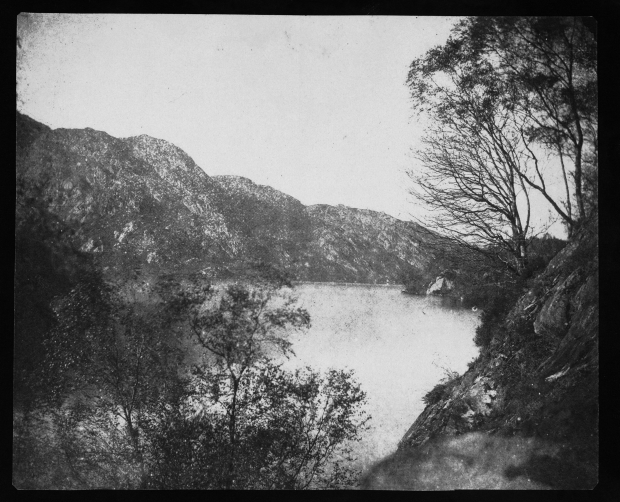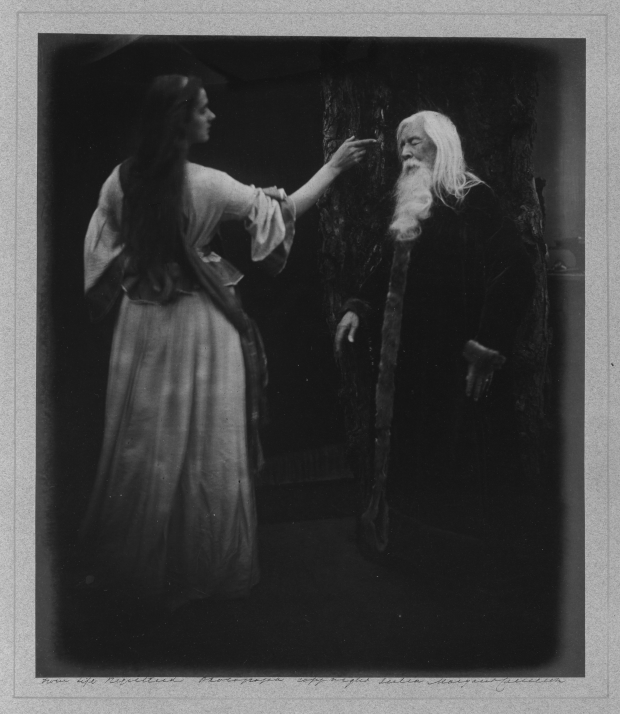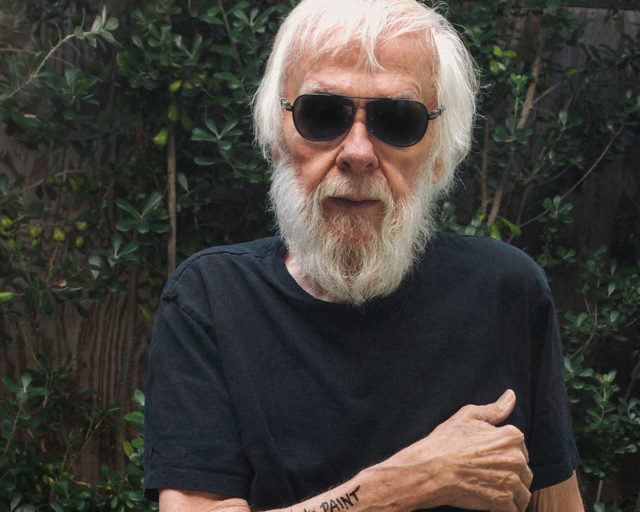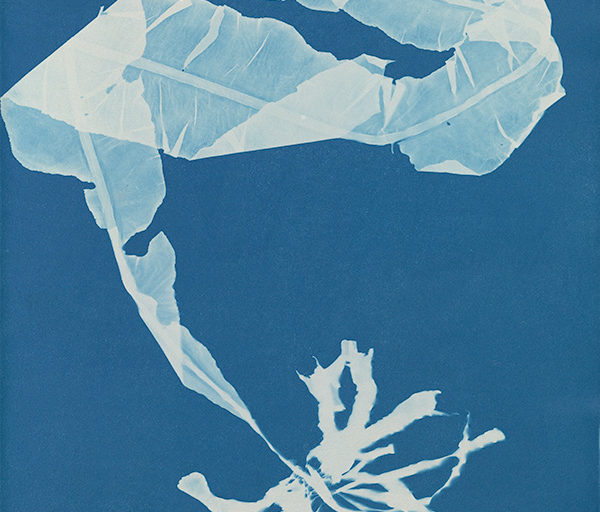On Chance and Photography

William Henry Fox Talbot, The Open Door, 1844. Courtesy Hans P. Kraus Jr., New York
To what degree is photography dependent on chance? If photography is a chance operation, are the intentions of the photographer undermined? Robin Kelsey, Shirley Carter Burden Professor of Photography at Harvard, and a regular contributor to Aperture magazine, tackles these and other questions in his new book, Photography and the Art of Chance (Harvard, 2015). Here he speaks with Samuel Ewing, a graduate student in art history at Harvard, about chance in relation to the work of Julia Margaret Cameron, Alfred Stieglitz, John Baldessari, and others, as well as on how chance itself led him to write a book on the subject. This article also appears in Issue 7 of the Aperture Photography App, a new biweekly publication from Aperture: click here to download the free app.
Samuel Ewing: You raise the point in the introduction that chance and its history have remained neglected issues within most photographic scholarship. I understand that a desire to fill in and understand these blind spots drives research, but it so often happens that chance, luck, or serendipity play a major role in even locating the blind spots to begin with. How did you initially “chance upon” this subject?
Robin Kelsey: Back in 2000, I was finishing up my dissertation on the survey photography of Timothy O’Sullivan and wrestling with how the photographs related to other survey modes of grasping the American West graphically—topographic sketching or cartography or verbal description. I thought Henry Fox Talbot’s The Pencil of Nature (1844) might help, because Talbot had to locate his newly invented photographic process in relationship to other modes of representing things. As often happens with great texts or works of art, however, I went looking for one thing and found another. As I read Talbot, it occurred to me that he was struggling brilliantly with an issue to which I had never given much thought, namely, the role of chance in making photographs. Is stumbling on a pleasing arrangement in the world the same as composing one from the imagination? Do the unintended details of a photograph speak on their own behalf? These questions troubled Talbot and, as I later discovered, some other great practitioners as well. So even before I had finished my first book-length project, the second had begun.

William Henry Fox Talbot, Loch Katrine, 1844. Courtesy Hans P. Kraus Jr., New York
SE: The principal photographers in the book—William Henry Fox Talbot, Julia Margaret Cameron, Alfred Stieglitz, Frederick Sommer, and John Baldessari—all have a rather substantial amount of scholarship already dedicated to them. Do you think your argument that chance plays a constitutive and often ambivalent role in photography would change had you focused on lesser-known subjects?
RK: What binds the figures featured in the book is their self-conscious grappling with the relationship of photography to art. For each of them, this grappling required addressing the troublesome role of chance in photography, and each addressed this role in terms responsive to his or her day and circumstances. When Cameron practiced, Victorians were very concerned that modern markets were making investment akin to gambling, and she treated photography as a kind of aesthetic speculation. Stieglitz was more interested in the spontaneous accidental forms of vapors and clouds and scenes on the urban street.

Anthony Weston Dimock, “I Took My Camera Shot from a Distance of Forty Feet,” 1887, from Wall Street and the Wilds. Courtesy Widener Library, Harvard University
SE:Since you mentioned Stieglitz, maybe we can talk about his image taken during the winter of 1892–93, Impression, which I assume to be one you consider really good since you write about it at length. The scene it depicts seems resolutely foreign today—a boy feeding wood into an asphalt paver’s stove—and yet you make the case that the image is redolent with “the alchemy of modern life.”
RK: It’s a great photograph, at least in my view. With Winter, Fifth Avenue (1893) and The Terminal (1893) receiving so much attention over the years, it puzzles me that Stieglitz’s grittier street photographs from that same winter have received so little. To understand the modernism of these pictures you have to remember that rustic labor was a favorite subject of pictorialists at the time. Haying, washing by the stream, that sort of thing. Often taken in a misty setting to give the picture a poetic feeling. Stieglitz knew that such rustic scenes just couldn’t be done in America the way they were done in Europe. So he turned his camera on urban labor, substituting the smoke and steam of machines for the vapors of brooks and fens. Asphalt paving was a perfect subject, because the bicycle craze was underway, and smoother roads were all the rage. With Stieglitz using a new hand-held camera, the picture was all about mobility and change. The result was a radically new pictorialism, one more open to spontaneity and chance.
Experiencing these modern dimensions of the picture today requires bringing all this to mind. It also requires remembering that Impression was primarily shown in the 1890s as a projected lantern slide. Although I have looked long and avidly at the slide of Impression in the George Eastman House on a light table, where it looks much more radiant and atmospheric than it does when reproduced on a page, I have never seen it projected. So, like everyone else, I must use my imagination!

Julia Margaret Cameron, Vivien and Merlin (from Idylls of the King), 1874. Courtesy Houghton Library, Harvard University
SE: You use the word glitch to describe the imperfections found in Julia Margaret Cameron’s photographs. I associate glitch more often with computers and digital images—corrupted jpg files, for example—than with the wet photographic chemistry used by Cameron. Were you thinking at all about contemporary digital chance while writing about these earlier figures?
RK: In a sense, yes. Glitch is, as you say, associated with electronics and seems to date from the 1960s. Using it in the context of Cameron was a conscious anachronism. I wanted a word that could grab the diverse and unpredictable process-based irregularities in her work—irregularities of focus, of emulsion application, of printing. What I liked about glitch was its suggestion of a systemic irregularity with a mysterious or autonomous origin. Words such as error or defect or mistake just didn’t do the trick. The ambiguity about origin—that is, whether Cameron was simply technically deficient or whether she cultivated the spontaneous flaw—is crucial to the power of her work. Her photography aims for ideals, while insisting that they will never be reached. A quintessential Victorian contradiction! Because what Cameron was fighting was a notion that photography was too mechanical to be an art, a word associated with mechanical breakdown seemed appropriate.
SE: It seems that mechanical breakdowns, though, pose less of a problem when camera technologies become more commercialized, regularized, and refined, especially when your story progresses into the twentieth century.
RK: That’s right. Cameron portrayed herself as an experimentalist, reinventing the medium in a messy, makeshift fashion. By the end of the nineteenth century, after Kodak has arrived, the game changes. Much of the role of chance migrates from the processing phase to the moment of exposure. That moment was always prone to chance—in the long exposures of early photography, a dog might wander in a street scene, or a young portrait subject might sneeze and blur the image. But with fast shutters and films, the so-called instantaneous photograph arrives, and chance takes on a new prominence in composition—to the point that even the word composition seems questionable. In the book, I spend some time discussing a remarkable example of that: Joe Rosenthal’s famous photograph of the flag-raising on Iwo Jima, the beautiful appearance of which came as a complete surprise to him. Most every snap-shooter has experienced something similar. What happens when chance plays a key role in determining the specifics of pictures? Have we honestly dealt with the implications? Or do we like to imagine some kind of mysterious intentions or meaning behind the accidents of everyday form?

Robin Kelsey, Photography and the Art of Chance, (Harvard, 2015). The cover features an image by John Baldessari
SE: The final figure in your book, John Baldessari, seems to build chance directly into the production of his pictures, often in the form of a game—a new photographic gambit. In the book, you write: “Just as Talbot, Cameron, Stieglitz, and Sommer had done before him, Baldessari found aesthetic possibility in a new historical meaning of chance.” What kinds of historical meanings are found at the intersection of chance, games, and photography in the 1970s?
RK: The changing meaning of chance over the past two centuries is crucial to the book. During the Cold War, chance became a tool of research. Specialists in the military-industrial complex used randomization to grapple with systems too complex to reduce to precise calculation. Games and simulations enabled designers of hydrogen bombs and conflict analysts of the RAND Corporation to grapple with an increasingly complex world. Many schoolchildren of the period, including me, spent many hours playing educational games modeling urban development, global diplomacy, or what have you. This surge of interest in gaming and simulation around 1970 is a largely forgotten chapter of history.
What does this have to do with photography? In the case of Baldessari, lots. He was interested in photography as a system, and he used games and randomization (e.g., throwing balls up in the air) to model it. In doing so, he was evidently taking on not only the everyday practice of photography but what we might call the Cold War “knowledge system.” The more time I spend with his work from that period, the more brilliant I think it is.

Nicholas Hughes, Untitled #16 (2012), from the series Aspects of Cosmological Indifferrence. Courtesy the Nailya Alexander Gallery, New York, and the Photographers’ Gallery, London
SE:What do you think are some of the contemporary meanings we ascribe to chance and photography?
RK: We are in a different era now. In some ways, the computational power of the digital age has fostered a return to determinism and a retreat of chance. Chaos theory, which is oddly named, posits that many things that seem random are actually determined by causal chains that are sensitive to initial conditions. In photography, we now have such a profusion of images that chance no longer seems to offer much of a pathway to the new. We have so many easy ways to digitally alter our images that chance seems to have given way almost wholly to the “chance effect.” But I wouldn’t dig the grave of chance and photography just yet. As I note in the conclusion, there are today still practitioners, such as Nicholas Hughes, doing interesting work that combines them.


























